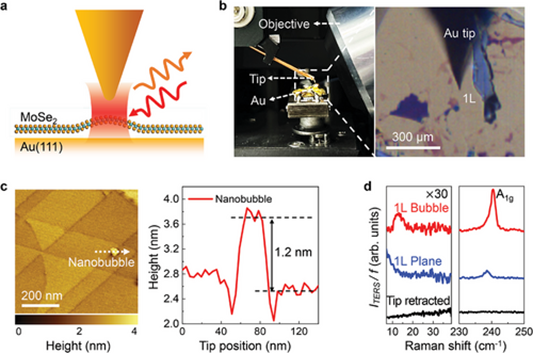Title: Ultralow-Frequency Tip-Enhanced Raman Scattering Discovers Nanoscale Radial Breathing Mode on Strained 2D Semiconductors
Authors: Mao-Feng Cao, Xiao-Hui Peng, Xiao-Jiao Zhao, Yi-Fan Bao, Yuan-Hui Xiao, Si-Si Wu, Jun Wang, Yao Lu, Miao Wang, Xiang Wang*, Kai-Qiang Lin*, Bin Ren*
Abstract: Collective excitations including plasmons, magnons, and layer-breathing vibration modes emerge at an ultralow frequency (<1 THz) and are crucial for understanding van der Waals materials. Strain at the nanoscale can drastically change the property of van der Waals materials and create localized states like quantum emitters. However, it remains unclear how nanoscale strain changes collective excitations. Herein, ultralow-frequency tip-enhanced Raman spectroscopy (TERS) with sub-10 nm resolution under ambient conditions is developed to explore the localized collective excitation on monolayer semiconductors with nanoscale strains. A new vibrational mode is discovered at around 12 cm−1 (0.36 THz) on monolayer MoSe2 nanobubbles and it is identified as the radial breathing mode (RBM) of the curved monolayer. The correlation is determined between the RBM frequency and the strain by simultaneously performing deterministic nanoindentation and TERS measurement on monolayer MoSe2. The generality of the RBM in nanoscale curved monolayer WSe2 and bilayer MoSe2 is demonstrated. Using the RBM frequency, the strain of the monolayer MoSe2 on the nanoscale can be mapped. Such an ultralow-frequency vibration from curved van der Waals materials provides a new approach to study nanoscale strains and points to more localized collective excitations to be discovered at the nanoscale.

Full-Link: https://onlinelibrary.wiley.com/doi/10.1002/adma.202405433